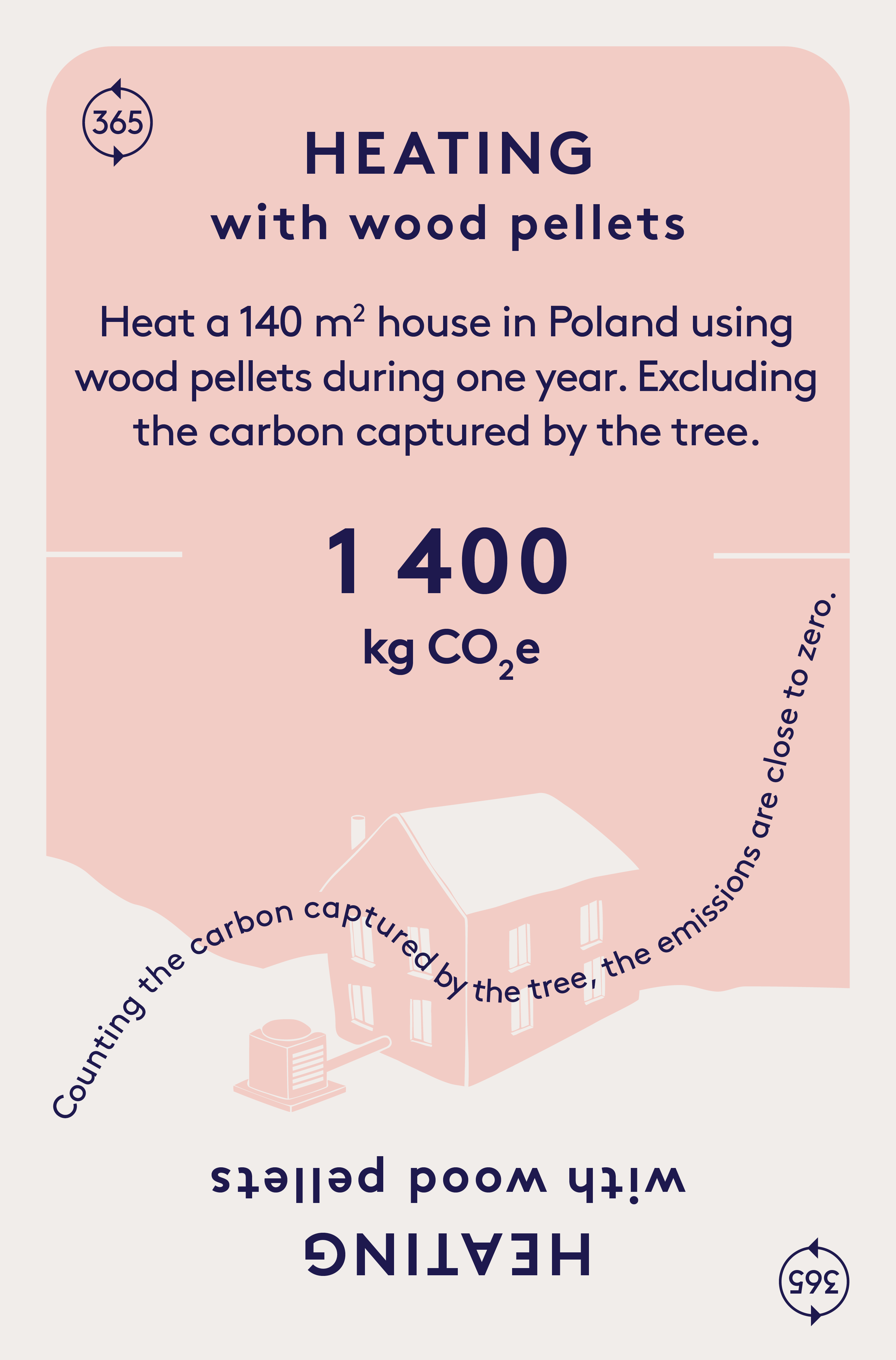HEATING
with wood pellets

FOLLOW OUR CALCULATION
Click the expendable headlines to look at each step of the calculation.
To calculate the greenhouse gas emissions, we have made the following assumptions and used the following data:
- Heating demand for the house: 540 MJ per square meter and year (representative value for houses in Poland)
- Living area: 140 square meters (the size of a medium-sized Polish villa)
- Efficiency of the boiler fired with wood pellets: 85%
- Emissions from burning wood pellets: 16 g CO2e per MJ (this mainly comes from the carbon stored in the wood)
The thermal energy required to heat the house for one year is calculated by multiplying the living space by the heating demand per square meter and year. The calculation shows that the heating energy demand amounts to 75 600 MJ per year (140 m2 × 540 MJ per m2 and year). This corresponds to the amount of heat that needs to be supplied by the boiler fired with wood pellets.
A wood-pellet boiler is a type of boiler that uses wood pellets to produce heat. The efficiency is a measure that indicates how effectively the boiler converts the energy contained in the wood pellets into usable heat energy. A boiler with an efficiency of 85% means that 85% of the energy contained in the wood pellets is converted into useful energy that can be used to heat the house (the remaining 15% is lost, or “not useful”).
This means that the actual energy demand is 88 941 MJ (75 600 MJ / 0.85) per year.
The greenhouse gas emissions are calculated by multiplying the total heat demand by the emission factor for burning wood pellets. The calculation shows that the emissions amount to 1 423 kg CO2e, which has been rounded to 1 400 kg CO2e on the card (88 941 MJ per year × 16 g CO2e per MJ).
See more card calculations: